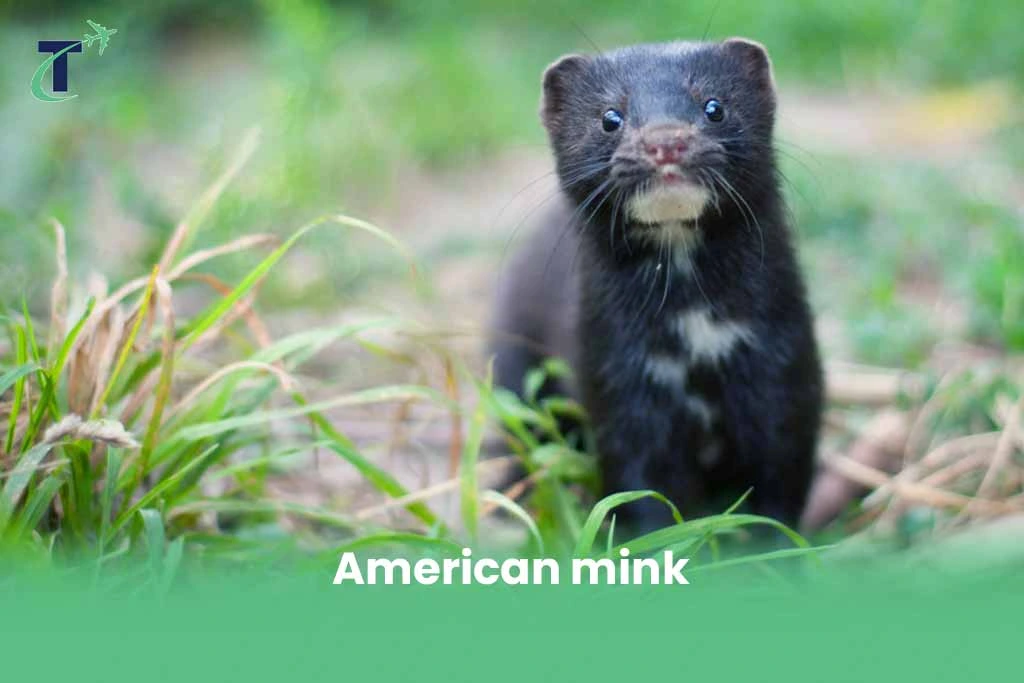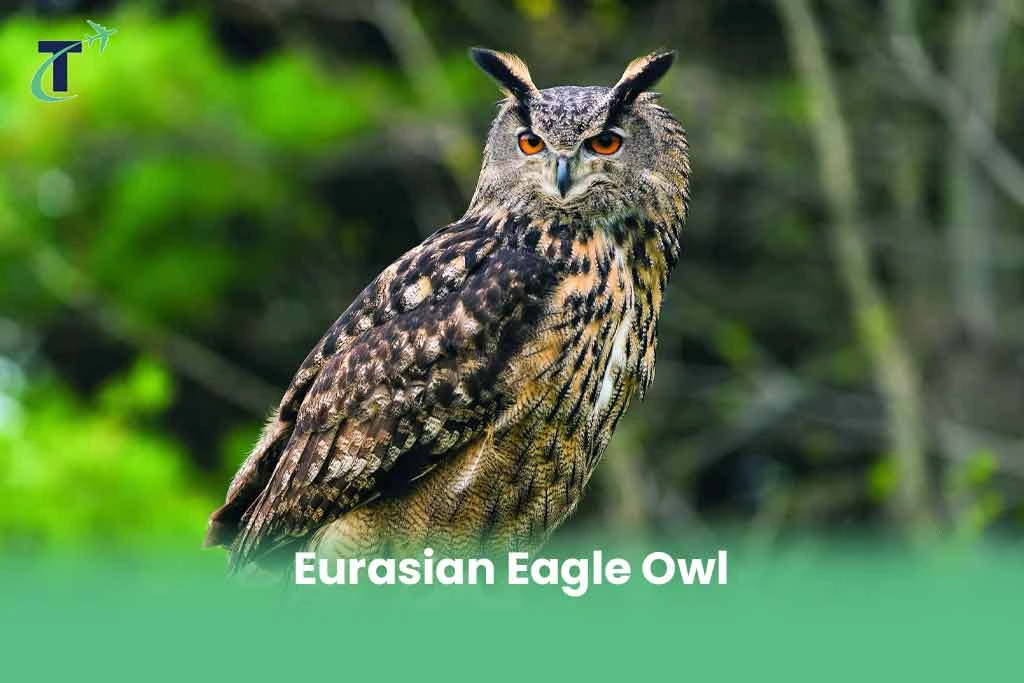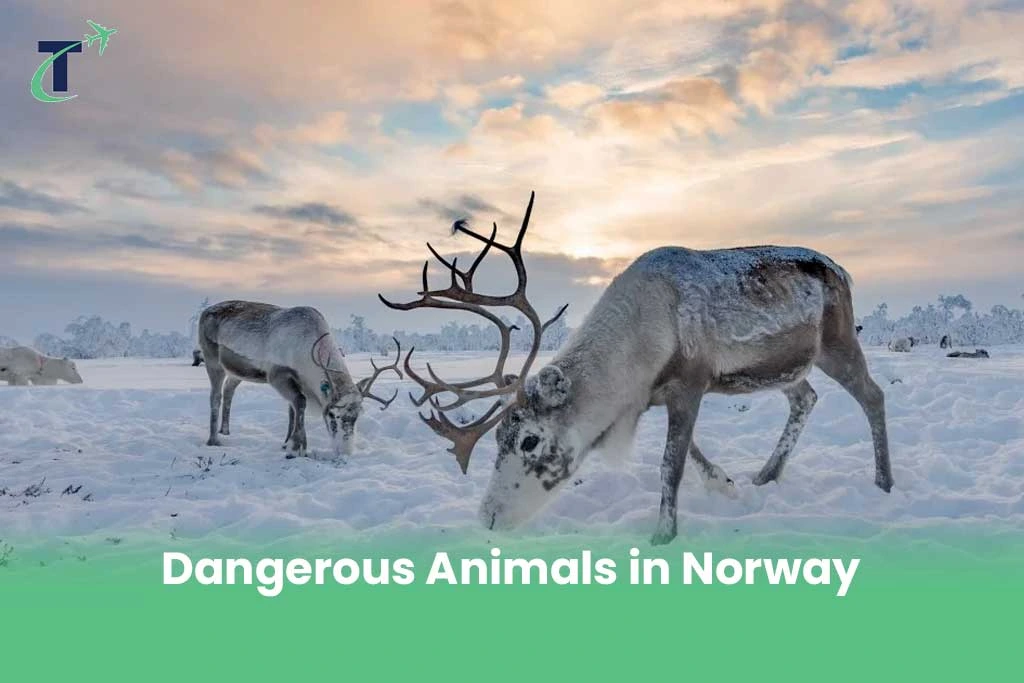Norway’s stunning scenery, untouched fjords, and verdant forests make it a paradise for outdoor lovers and adventurers.
However, there is a secret world of possibly hazardous creatures within the peaceful beauty of this Scandinavian paradise.
It is important to be aware of the species that might pose a hazard whether you are a hiker, wildlife enthusiast, or just considering a vacation to this beautiful nation.
In this piece, we’ll go on an adventure into the wilds of Norway to learn about the interesting but possibly frightening world of its dangerous creatures.
We’ll learn about the wide variety of animals that deserve our attention and caution, from sneaky predators to poisonous reptiles. So, join us as we explore the exciting domain of “What are the dangerous animals in Norway.”
Wild animals to watch out for in Norway
Norway’s deep fjords, rich forests, and towering mountains are just a few of the reasons the country is considered a natural marvel.
more articles : dangerous animals in Sweden
If you intend on venturing into the Norwegian countryside, you should be aware that behind its beautiful landscapes lurk some potentially hazardous creatures in Norway.
· Brown Bears

Brown bears, gorgeous woodland giants, are among the most destructive creatures in Norway.
These formidable animals represent the raw Scandinavian environment, yet confrontations with them may be dangerous.
Norway’s greatest land predator, brown bears, avoid humans but may be lethal if disturbed. Anyone going outside in Norway must know bear habits, respect their territory, and how to behave if approached.
In the rough Norwegian nature, people and bears must cohabit together with awareness, caution, and respect for these majestic but dangerous animals.
· European Wolf

The Norwegian European wolf, formerly endangered, has achieved a spectacular recovery. These mysterious monsters avoid human settlements yet are among Norway’s most dangerous animals.
Wolves are important for the environment, yet they can harm cattle and pets. Wolf predation on domestic animals worries farmers and rural communities.
Norway has obstacles in understanding wolf behavior, protecting cattle, and fostering human-wolf cooperation.
Wolves and people seldom interact, but their existence reminds us of the difficult balance between conservation and conflict management in Norway’s natural environment.
· Moose

In Norway, moose that are encountered in the Norway wild, the peaceful giants of the woods, can be lethal.
These gigantic beasts may seem peaceful, yet they become unpredictable and fierce when threatened, especially while guarding their young. Wild and roadside moose encounters are dangerous.
Norway has a high rate of moose-vehicle collisions, which may be deadly for both parties. Seeing moose from afar is exciting, but respect their space.
To safely interact with Moses in Norway’s stunning landscapes, visitors must understand moose behavior and follow safety guidelines.
· Reindeer

Reindeer cannot be on a list of lethal animals in Norway’s vast countryside, where beautiful views meet severe nature.
While innocuous and iconic, road encounters with these creatures can be difficult. Reindeer seldom crossroads, especially in northern Norway, where they might cause accidents that cause them to be one of the most dangerous animals in Norway.
These mishaps harm reindeer and humans. Reindeer are not inherently unfriendly, but their perils in high-traffic places remind us that even Norway’s most iconic symbols of nature may be inadvertently dangerous.
Motorists must be extra cautious in reindeer regions, especially after dark when the animals are most active.
· American mink

Norwegians are concerned about the invading American mink as dangerous animals in Norway which may be harmful.
These adaptive carnivores, once imported for fur production, now live wild in coastal locations. American minks are adept hunters that threaten ground-nesting birds and small animals.
Their predatory influence on local ecosystems has made them a threat to Norway’s biodiversity. While American minks may not directly threaten people, their unrestrained spread in Norwegian environments highlights the need for wildlife management and conservation to offset their environmental impacts.
· Eurasian red squirrel

Norwegian forests are home to the charming Eurasian red squirrel that, are Wild animals to watch out for in Norway.
These cute rodents have colorful russet hair and frolic under the forest canopy. Red squirrels are not dangerous; however, they may be nuisances in urban and rural areas.
They may destroy property and upset residents by entering gardens and houses to get food. However, the red squirrel’s behavior is mostly guided by its natural inclinations and is vital to Norway’s environment as a seed disperser.
They should be treasured as part of Norway’s beautiful natural tapestry, not as threatening.
· Muskox

Muskox, a fascinating Arctic mammal, is rarely a dangerous animal in Norway. The harsh Arctic tundra, especially in northern Norway, suits these beautiful, hairy beasts.
Despite their size and intimidating appearance, muskoxen are peaceful herbivores who graze on plants. Norway’s muskoxen seldom come into contact with humans.
However, muskoxen and other wild creatures should be seen from a respectful distance to protect them and curious bystanders.
These magnificent organisms are part of Norway’s unique Arctic ecology; thus, they should be appreciated as such rather than threatening.
· Ticks

However, little ticks are Norwegian wildlife hazards. Blood-feeding arachnids are not hostile, yet they spread illnesses like Lyme. Hikers and outdoor enthusiasts in Norway should avoid tick bites.
Woods, thick grass, and heathlands are full of ticks that may infect people and pets. To reduce tick-borne infections, wear long clothes, use insect repellent, and inspect ticks after outdoor activity.
Ticks don’t represent a direct physical danger, but they may spread illnesses, so be careful while enjoying Norway’s natural beauty.
· Eurasian Eagle Owl

With its large wingspan and strong talons, the Eurasian Eagle Owl is a deadly Norwegian predator. They seldom come into contact with people, but their existence in Norway improves animal awareness.
These amazing birds of prey hunt tiny animals and birds at night. They don’t harm people, although small pets and animals may be at risk.
So, in rural or near-owl habitats, people should be careful to safeguard their animals. The Eurasian Eagle Owls in Norwegian nature may not be dangerous to people, but their magnificent presence in Norway’s natural landscapes inspires awe and admiration for its rich wildlife.
· Jellyfish

Some jellyfish species in Norwegian coastal waters are harmful. These gelatinous organisms are not predators, yet their stinging tentacles may injure swimmers and beachgoers.
If handled, the lion’s mane jellyfish’s severe stings may cause skin irritation. Jellyfish are abundant in Norwegian seas in summer.
Swimmers should be careful and use protective clothing to avoid disrupting Norway’s lovely beaches and crystal-clear fjords by these aquatic critters.
In the end,
Overall, Norway’s magnificent wilderness and natural landscapes are home to a wide variety of animals, some of which are deadly.
Although sightings of these animals are relatively uncommon, they serve as a reminder of the precarious equilibrium that exists between people and the environment in this beautiful land.
Norway is home to a wide variety of wildlife, each of which plays an important part in the country’s environment.
Tourists and Norwegians alike must treat these species with the utmost care, taking precautions to protect them and maintain Norway’s unique biodiversity.
Future generations can enjoy the beauty of Norway’s wilderness for as long as the cohabitation of people and animals is recognized and respected.
Now we want to ask you, did you experience the travel to Norway?
Which one of these dangerous animals in Norway? Share what you think is beneficial for our readers.




